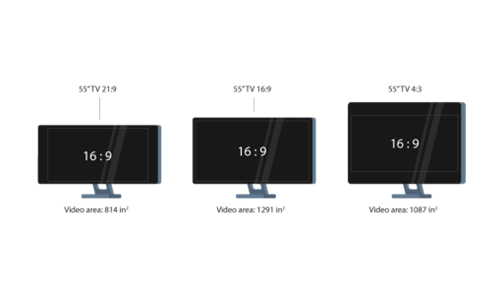If you are looking for buying a new phone, TV, or monitor these two specifications are always displayed. The aspect ratio and the resolution. Quite often resolution is used as a key selling point of a device. You might have heard that certain phones are capable of recording video in 4K. Many premium TV claims of displaying 8K content. But what does it even mean? Let’s understand these concepts in this article.

Table of Contents
ToggleResolution
Each display is made up of dots which are referred to as pixels. The pixel is the fundamental element on a screen. These pixels cover the entire area of the display to project the image. Resolutions are simply a number that directly tells of the total number of pixels present. Higher the number generally better the quality. Let’s look at an example. Full HD resolution is broadly used in almost all devices. It is nothing but 1920 x 1080 resolution. This means the display has 1920 pixel dots across and 1080 pixel dots vertically in all 2073600-pixel dots in total. More such pixels you have more detailed the image can be.
If you have noticed, a smartphone and a tv are both of their cars capable to provide full HD resolution. Does that mean both of them have the same number of pixels despite different display sizes? well to answer this let’s understand another concept of DPI.
DPI
It stands for dots per inch or is sometimes also referred to as PPI for pixel per inch. As the name states it simply tells you how many pixels are present in one square inch of length. It’s simply telling you the pixel density.
So coming back to our question. Yes if two displays of different sizes say 25-inch and 32-inch and are rated the same resolution they will indeed have the same number of pixels present. What would be different will be the pixel density. Of course, the one with a bigger display will have less pixel density.
Ideally having a higher pixel density means a more detailed and sharp image. But practically there is a limitation to that in terms of experience. Beyond a point we humans are not capable of differentiating the image difference between the two. Based on our example 25 inches will have 88 ppi and 32 inches will have 69 ppi.
common resolution available
720p
common name: HD/ standard HD
resolution: 1280 x 720
1080p
common name: full HD/ FHD
resolution: 1920 x 1080
1440p
common name: 2k/ QHD
resolution: 2560 x 1440
2160p
common name: 4k/ ultra HD/ UHD
resolution: 3840 x 2160
4320p
common name: 8k
resolution: 7680 x 4320
Aspect ratio
This is another parameter you must have seen frequently when buying a mobile, tv, or even in photography. It is a ratio with a described correlation between the width and height of the monitor. The most common aspect ratio are 4:3, 16:9, and 21:9. To understand these numbers better let’s look at an example. Let’s say we have 3 monitors of 55 inches. But each one has a different aspect ratio as mentioned above. Then, in this case, 21:9 will be the one with the most elongated rectangular shape. while 4:3 is the most squarish shape. While 16:9 is the most optimum size and is used worldwide. Below is the image to represent different aspect ratios.

When selecting a display, resolution, and aspect ratio will be crucial factors. Different aspect ratios and resolutions will provide you with varying degrees of comfort depending on the type of job you’re doing, such as typing, editing, or browsing. Hence we recommend doing some basic research on your requirement before choosing the resolution and aspect ratio.
